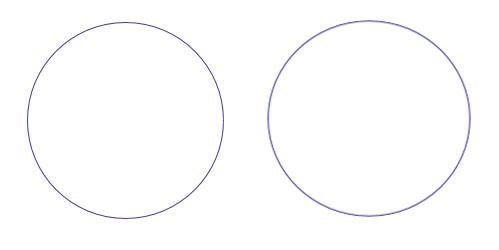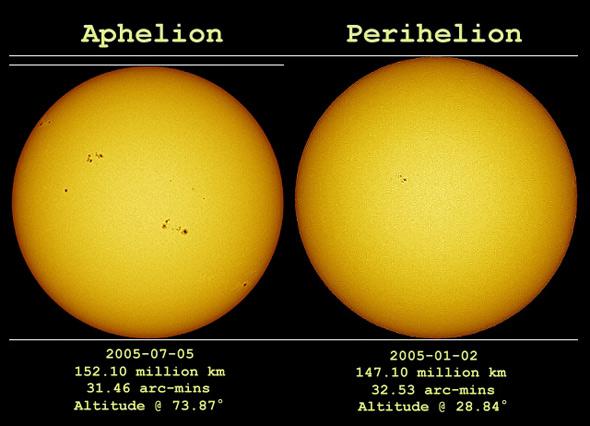If you’re feeling particularly chummy with the Sun today, like you two seem really close for some reason, then you may be right: Today at 12:00 UTC (07:00 EST) the Earth is at perihelion, the point in its orbit when it’s closest to the Sun. At that time, the center of the Earth is 147,104,780 kilometers (91,406,672 miles) from the Sun.
The Earth’s orbit is an ellipse, so sometimes we’re farther from the Sun and sometimes closer (the farthest point is called aphelion). The average distance of the Earth from the Sun is about 149,597,871 km (just a hair under 93 million miles—this distance is called an Astronomical Unit or AU), but due to the eccentricity (the ellipticalness, to coin a word) of the orbit that distance can vary by about two or so million kilometers either way.
I know, for most folks it’ll seem weird that we’re closest to the Sun in the dead of winter—the solstice was only a couple of weeks ago!—but the seasons have very little to do with our distance from the Sun. There is a small effect, but it’s totally swamped by the fact that the Earth is tilted by about 24 degrees relative to its orbit.
Last year, when we were at perihelion (on Jan. 2, 2013) I wrote a lengthy explanation of it, including this fun picture:

Photo by Wolfram Alpha/Phil Plait
One of those is a perfect circle, and the other an ellipse scaled to match the shape of Earth’s orbit. Can you tell which is which?
The one on the right is the ellipse. It’s pretty amazing, but if you shrank the Earth’s orbit down to this size, it’s barely distinguishable from a circle. But that ellipticity, small as it is, does have an effect on temperature, the length of our day, and even the timing of sunrises and sunsets!
So if you get a chance, go outside today and feel the sunlight on your skin … and consider that it took 8.18 minutes to reach you from the Sun, about 16 seconds less than it will take to reach you when the Earth is next at aphelion … on July 4, 2014.
